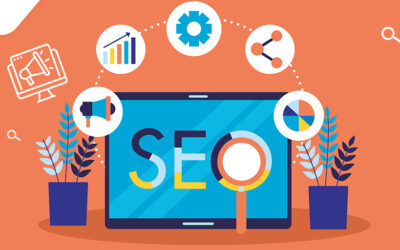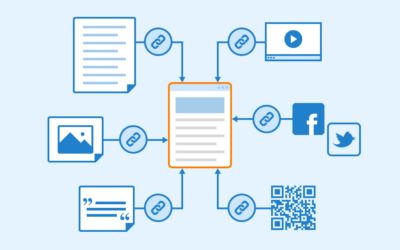Return on Investment for Various Digital Marketing Strategies
John Wanamaker, the pioneer of modern-day marketing once noted that half of his advertising budget went to waste. The religious leader, merchant, and political figure like many business owners of the day, also recognized that could not tell which half of his ad budget went down the advertising drain. John Wanamaker’s fledgling business eventually grew from a successful department store to become part of Macy’s.
The prolific entrepreneur that John was would be very much at home with the modern-day digital marketing practices. Digital advertising usage has dramatically increased since late 1994 when the first known banner ad flashed on HotWired.com. The launch of Google AdWords and Google Ad Sense in the early 2000s followed by Facebook Ads’ release in 2007 quickly turned the tide against traditional advertising methods.
They have given the marketer fantastic benefits, which include the accurate and precise measurement of advertising return on investment (ROI).
What is the ROI of Typical Digital Marketing Strategies?
The return on investment of any business process is an outcome of two main measurements; the cost of the process and the resultant outcome generated. The measure of costs and impacts is not a straightforward process in advertising. Consequently, large organizations utilize composite ROI formulas that factor in their multiple costs and impact variables. The ROI of traditional advertising, therefore, remains highly undeterminable.
The analytics of data in modern digital advertising, on the other hand, can reveal the minute details of ad campaigns and their ROI. So, how much should you expect from your online marketing efforts? The digital advertising ROI is a product of its revenue to marketing value ratio. The only question that you need to answer with your digital ad channels is, “how much am I generating for each dollar that I spend on marketing”?
A typical revenue to cost ratio for digital advertising is 5:1. Therefore, a dollar spent on advertising should bring in a five-dollar revenue. If your advertising efforts can produce a 10:1 ratio, classify your online advertising efforts as top of the range.
How Can a Good ROI Be Improved in Digital Marketing?
Some of the costs that you have to factor in when calculating your ROI are;
- Media spend
- Pay-per-click costs
- Cost of content production
- Display ad clicks
- Digital Marketing agency costs
Your ROI should cover all the costs of product processing and its marketing at the bare minimum. To cater to all these costs you need to place data at the center of your operations. Data-driven marketing can improve your ad ROI. Unfortunately, over half of all marketers do not collect or analyze digital advertising data.
87% of marketers that work with organizations that collect this data feel that this critical information is the business’s most underutilized asset. If your executives do not take data as a top priority for your business, then your ROI could remain in the dumps for a long time. To improve your ad ROI,
- Change your strategy and become a marketing driven organization that explores customer data in detail. These practices will bring new customers and keep loyal clients contented.
- Set up SMART or ROI goals that have Specific, Measurable, Achievable, Relevant, and Time goals such as an ROI of 5:1. These goals should factor in your business’s cost of production, industry, and structure.
- Place an emphasis on data metrics that have a direct impact on your ROI. Overvalued metrics such as social media likes will not affect your ad ROI but will improve your SEO.
- Use your data to identify new and old business opportunities.
- Embrace predictive modeling’s ability to increase and measure your ROI
- Use marketing automation tools to manage complex advertising campaigns that have tight budgets.
- Keep experimenting and adjusting your strategies to reap the highest benefits from digital adverting.
How to Improve Your ROI through Digital Marketing Strategies?
Search engine optimization
SEO will optimize your website and enhance online visibility via an improved position in organic search rankings. Good SEO will direct more traffic to your site and increase your revenue. This practice will also bring in long-term benefits such as sustainable rankings, keyword targeting precisions, brand flexibility, and credibility. One other fantastic benefit of SEO is that it is an affordable and efficient way to boost your ROI.
Search engine marketing
These advertising strategies can rank your business ahead of its competition via sponsored ads. It is a source of short-term ROI improvement since it brings in quick leads. Nevertheless, SEM has the potential for long-term benefits such as increased visibility, audience development, precise targeting, and high-quality lead generation.
Content marketing
Providing value to your online audience can increase traffic to your website. Content marketing is therefore central to SEO. This practice has long-term benefits such as increased visibility, trust, reputation, and lasting value.
Social media marketing
A good social media marketing strategy will increase your bottom-line by building your brand’s online reputation. Paid social media ads can significantly influence your ROI. Its benefits are that it is a low barrier entry, effective and affordable brand awareness tool.
Email marketing
Email marketing is a sure bet in ROI increase. Data shows 67% of all businesses consider it as their topmost source of digital marketing revenue. Email marketing utilizes promotional offers or newsletters to build subscriber lists.
This channel will keep your customers loyal to your brand and attract new leads as well. This simple and affordable digital advertising strategy has the benefits of traceable data and an ROI focus.
Video marketing
This is currently huge in terms of getting users engaged and converting. Video builds trust quickly. And when well done, it can win you some loyal fans. Use a free video editor like InVideo to create awesome videos. Take advantage of royalty-free music if you want to play something on the background.
Conclusion
Digital advertising has risen on the back of online inventions in the display, search, programmatic and native advertising giving you a wide range of opportunities that can take your brand to its next level of growth. Promotional content in digital advertising is brought to the attention of your target market via digital and online channels.
These may include email, social media, mobile apps, search engines, websites, or affiliate programs. Unlike the traditional methods of advertising in Wanamaker’s time that had a spray and pray outlook to ROI determination, digital advertising is data-driven. Data makes it easy for you to increase your digital advertising ROI and to grow your business.
Author Bio
David Freudenberg is apart of the Public Relations team at DJO Productions a multi-platform production website where videographers, producers, artists, marketers, and more can download SFX&Music, VFX, Media Elements, Graphics, 3D images, and more. When he is not building relationships at DJO Productions he enjoys fishing, boating, and hanging with friends.






Really Great Post. All time to read your post and get new update from that. such a great post. you can also visit my post on this link.
http://hotshothotelier.com/blog/12-mistakes-that-we-should-not-do-while-doing-digital-marketing/
I feel very thankful that I could read that awesome article. Thanks for sharing. Keep posting.
Thanks for sharing the valuable information.
thanks for the nice post.
Comments are closed.